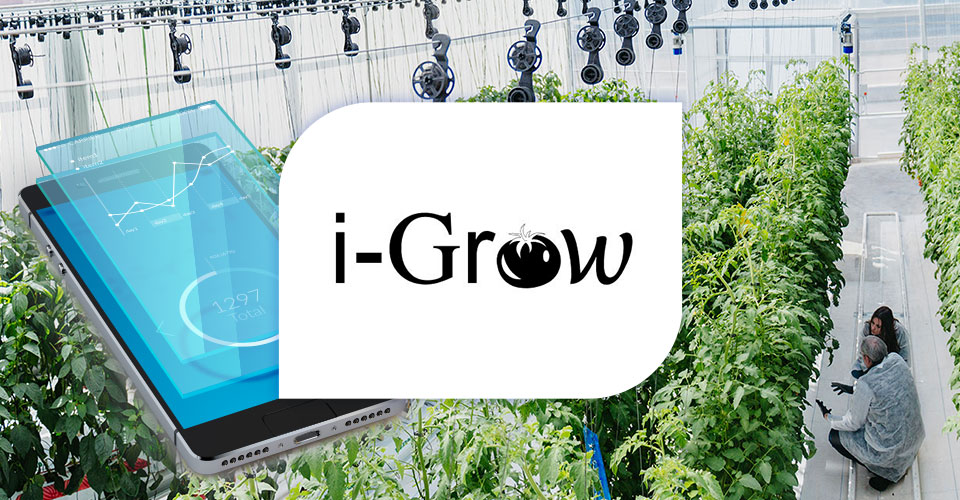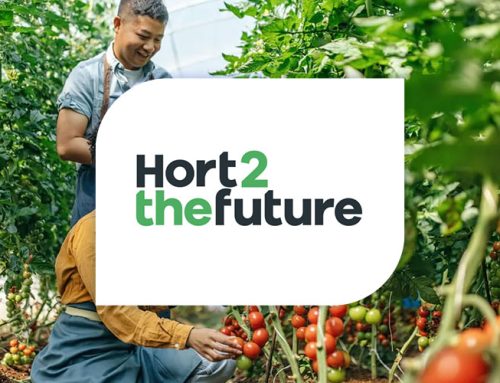i-GROW. Protected crop management support systemtivos protegidos
Hacia un nuevo sistema de apoyo a la gestión de cultivos protegidos con matemáticas aplicadas para aumentar la productividad.
The I-Grow project, towards a new support system for protected crop management, has been financed within the call for proposals “Projects for the Creation of Joint Innovation Units” of the grant line “Leadership Program in Open, Strategic and Singular Innovation” within the thematic objective “Promoting technological development, innovation and quality research”. whose members are Novagric as leader and the Technology Center Tecnova as a participant.
Approved by Idea , Final Resolution, on 13/7/2022 with a 60% ESB, being the eligible budget 834,189.29 € and the approved grant (pending receipt) of 500,513.57 eur.
The Joint Innovation Unit presented in this project arises from the need to unite, on the one hand, the experience and information that NOVAGRIC has, due to its activity in the sector, and on the other hand, the technical-scientific capacity of our Technological Center, in order to address together new knowledge in the field of agriculture, to help the reorientation of the protected productive sector towards new technologies. All this in order to meet the challenges of the coming years, of an agriculture that plays an absolutely fundamental role as a source of food production that is essential for the life and health of people.
The objective is to develop a new decision making concept (DSS) in protected crop management, for a wide range of climatic, productive and economic conditions.
The main features will be: Prediction, characterization and combination with the growth model.
The DSS shall meet the following requirements:

- Predict temperature, vapor pressure and CO2 concentration.
- Characterization of the singular climate conditioning elements.
- Combine with a growth model of the main horticultural varieties.
Specific objectives of the I-Grow project
Study and development of a climate model for protected systems. To simulate the indoor environment according to the greenhouse configurations selected by the user and control strategies under any climatic situation. The rationale for this objective, is based on the success of commercial greenhouse operations begins with proper site location selection and an appropriate greenhouse design configuration that meets crop needs and overcomes climatic conditions. Having a tool to evaluate various greenhouse design alternatives and different climatic conditions will improve the decision making process for proper greenhouse design and optimal location. Climate models developed to date have focused on a single location and a limited and specific set of climate building and modifying elements (Rodriguez, 2015). Phenotypic characterization of the main horticultural varieties of economic interest By obtaining the variables of the Farquhar photosynthesis equation. The justification is based on the fact that obtaining a specific growth model for each variety, which defines the characteristics of the crop, at a time when there is a constant renewal of the plant material offered, could be of interest for a better agronomic management and would improve the decision making process to direct the crop towards a high productivity model. Identify the response curves of the different selected varieties to different external conditions. Currently there are production or photosynthesis models, however models to simulate various plant physiology processes, which are directly related to the productive yield of the crop, such as models of flower set, floral abortion or physiopathologies such as blossom-end rot (poor calcium assimilation), are not at the same level of development (Marcelis et al., 1998; Heuvelink et al,. 2003; Rodriguez, 2015). Therefore, in order to identify and simulate all the physiological processes that are directly related to the final crop yield, this project proposes to develop photosynthetic and agronomic response curves as a function of crop climatic variables. Development and implementation of an intelligent optimization algorithm in the cloud that manages the information obtained from the climate and crop models developed to optimize the best solution to the following options; protected system design, maximum production, costs and resource (water) optimization. The justification for the development of this algorithm is based on the fact that crop management in protected systems is based on the experience of set point values without considering the specific specifications of each commercial variety. This project proposes the possibility of taking advantage of the knowledge acquired for each variety, to condition the position of the climate actuators, and thus maximize the photosynthetic response of that variety. The implementation of an algorithm of high mathematical complexity is unfeasible for any automaton currently existing in the agricultural sector. Therefore, it is necessary to design a new cloud architecture that allows for more computational processing.Novagric’s specific objectives
- Obtain a greenhouse design configurator for any climatic situation and structural typology.
- Fluid dynamics simulation of singular elements of the greenhouse to identify improvements.
- Development of new unique greenhouse elements (windows, roof shapes, etc.) based on the knowledge acquired.
- Identification of the position of the climatic actuators that allows the best response of the crop.
- To obtain a greenhouse climate database sufficiently representative of greenhouse production areas worldwide.
Expected results
Upon completion of these activities, the following results will have been achieved:- A climatic database of greenhouse interiors around the world.
- Choice of the model, method and calculation algorithm from CFD numerical simulations that will be used in the following activities.
- Identification of horticultural varieties of interest that maximize production.
- The mathematical equations that describe the simulated physical phenomena for each singular element.
- The correct verification of the behavior of these mathematical expressions through wind tunnel tests.
- The design of new singular elements derived from the knowledge acquired during the simulations performed.
- A climate model with a wide possibility of greenhouse structural configurations
- An unprecedented growth model in intensive horticulture.
- A unique multi-objective optimization system that will facilitate the management of protected production systems.

Categorías
Últimas novedades
- HORT2THEFUTURE. Oxygen irrigation to improve soils
- HORT2THEFUTURE. Oxygen irrigation to improve soils
- GREENFOLD. Foldable and Reusable Greenhouses
- DARkWIN. Project to improve crops in the face of climate change
- +PreVENT. Positive pressure system for ecological greenhouses
- Novagric develops Solidarity Agricultural Projects
- Carbon Fertilisation Levels in Greenhouses
- How to control the climate during carbon fertilisation
- i-GROW. Protected crop management support systemtivos protegidos
- VERTICAL SUNNING. Vertical farming without artificial light






